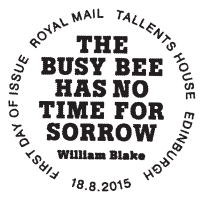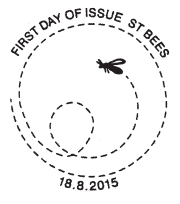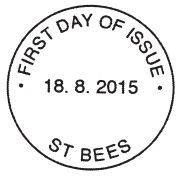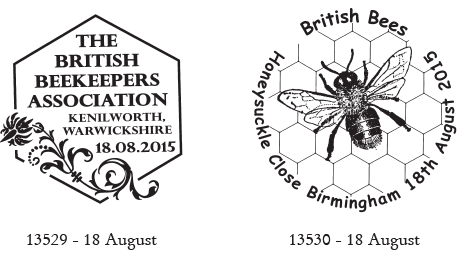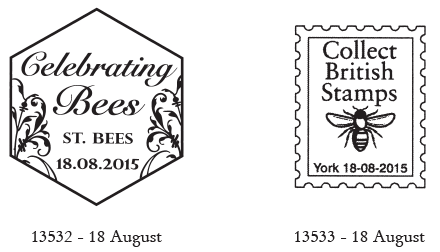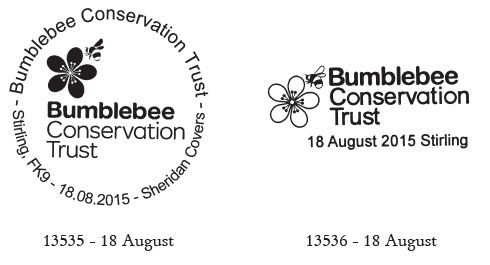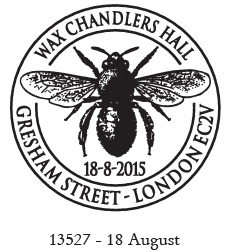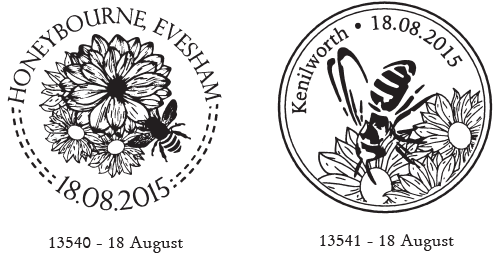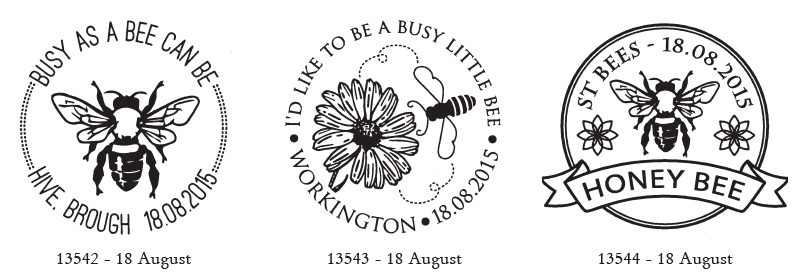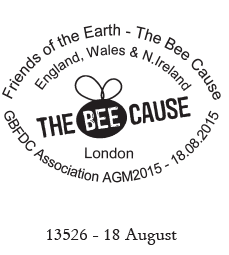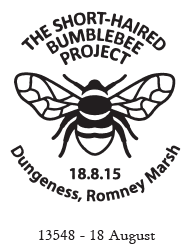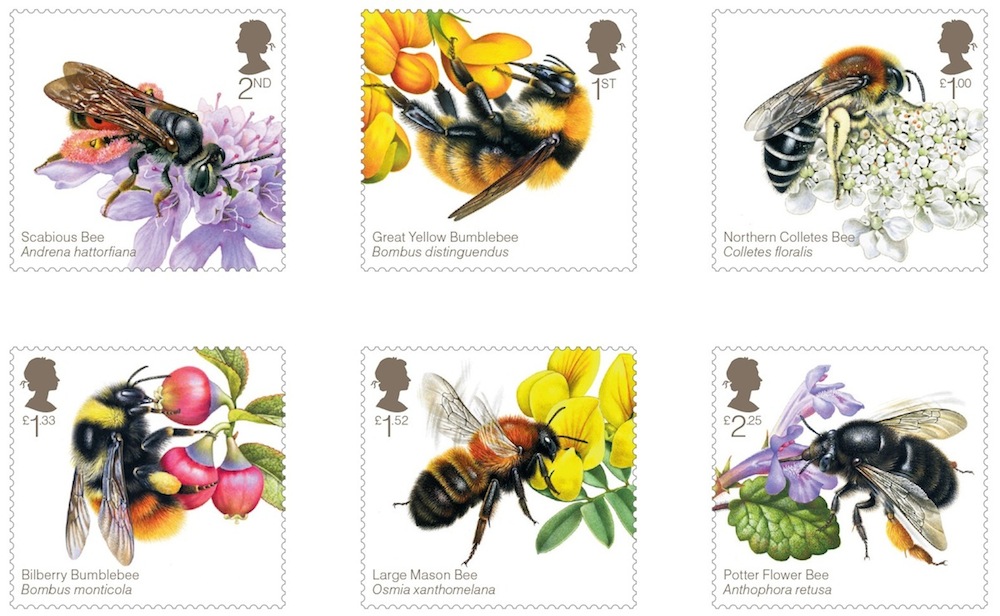
2nd class - Scabious Bee, 1st class - Great Yellow Bumblebee, £1 - Northern Coletes Bee.
£1.33 - Bilberry Bumblebee, £1.52 - Large Mason Bee, £2.25 - Potter Flower Bee.
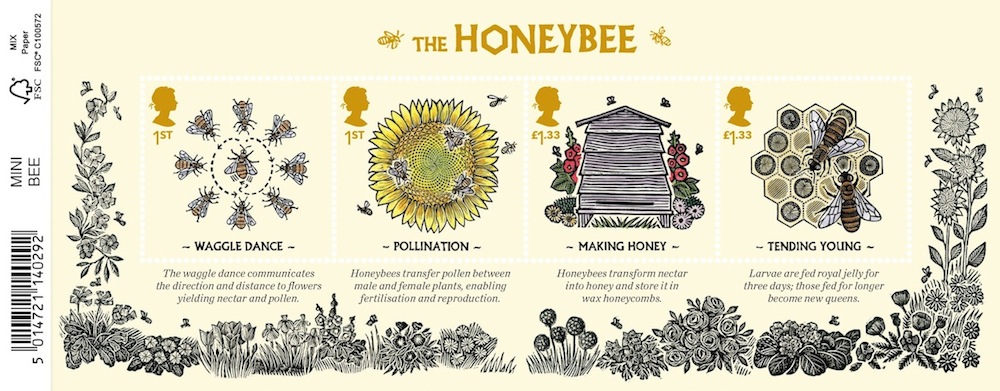
The western Honeybee. 1st class: Waggle Dance and Pollination; £1.33: Making Honey and Tending Young.
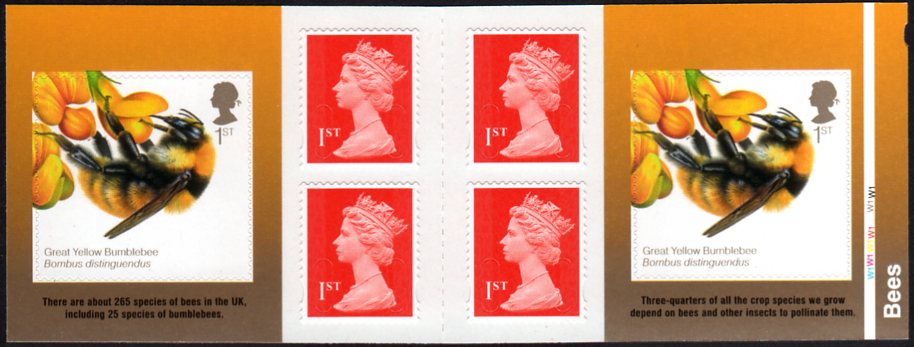
Retail booklet of 4 x 1st class red Machin definitive stamps (security coded M15l MCIL) and 2 x 1st class Great Yellow Bumblebee stamps.
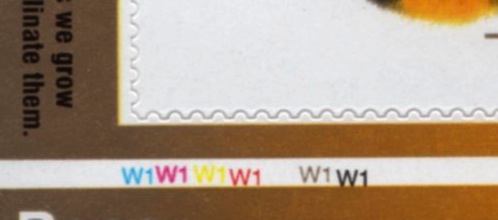
Booklet cylinder numbers are W1, left to right:
cyan, magenta, yellow, Royal Mail red,
iridescent, gold, black, and phosphor.
As well as the Queen's head and value on the stamps,
the selvedge is also gold, with underlying orange/brown
shaded to the foot of the booklet.
